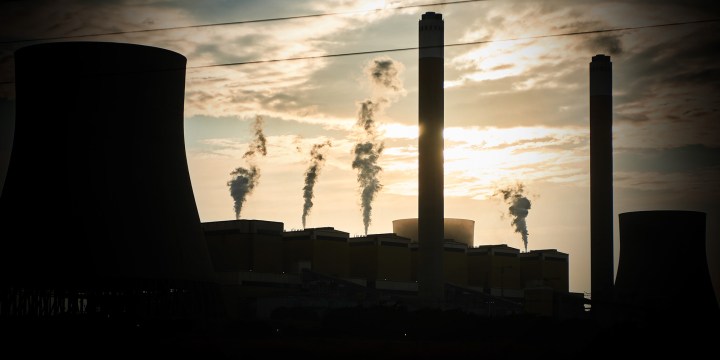BUSINESS REFLECTION
After the Bell: Solving the Eskom crisis with a slow-burn solution

In the real world, it’s often not the eye-catching, calamitous crises that cause the most damage, but rather the ones that creep up on you.
Know the joke about the guy who fell out of New York City’s Empire State Building? As he was falling past many floors, someone asked, “How’s it going?” He responded: “So far, so good!”
This is a good illustration of the danger of being too much of an optimist. But it’s an illustration of something else too: the dangers of slow-burn problems. Slow-burn issues are intriguing because the way crises normally unfold is in a dramatic, calamitous way. In some ways, a crisis is almost defined as something unexpected that happens suddenly.
Oddly enough, one of the characteristics of big crises is that you can imagine them; they are fearful events, and so it’s often possible to prepare for them. Think of guardrails at places where people could fall (how our wisecracking falling man above managed to avoid the safety nets at the top of the Empire State Building is just one of the inconsistencies in the joke).
Most organisations focus on immediate, acute crises that are high impact but low frequency. One paper I read said the interesting thing about high-impact crises is that they often include a “trigger event”. That could be anything from a volcanic eruption to a tsunami wave, which later results in the crisis in question.
But in the real world, it’s often not the eye-catching, calamitous crises that cause the most damage, but rather the ones that creep up on you. It’s in the nature of low-intensity problems that they lead to crises that are difficult to control because the problems remain unrecognised or at least minimised for so long.
Over human history, the most awful slow-burn crises have been famines caused by droughts and crop failures. Every year, people convince themselves the drought will end the following year. And when it doesn’t, the scale of the problem is so large, it’s difficult to turn around.
South Africa faces a great example now with Eskom. If ever there was a slow-burn crisis, this was it. I began worrying about Eskom more than a decade ago after some contractors approached me for advice about a new demand Eskom management was making that contractors’ BEE credentials had to be double the then-legal requirement. The contractors said they had dutifully complied with the 25% black equity ownership stipulation, but Eskom’s management had suddenly changed that to 50%.
Honestly, I didn’t know what to say. Obviously, for some contractors, this was possible to achieve. But for others, it would require finding partners with expertise that either didn’t exist or would be difficult and expensive to obtain. It would also massively change the investment return ratios.
But the big problem was that it suggested a complete lack of commercial understanding and/or a desire to drive up rents to such an extent that the only solution was to bribe someone within the organisation to look the other way.
It was only years later that we saw the consequences of this problem come to the fore. Mostly respectable companies like ABB suddenly did things that, by all accounts, were just unconscionable. And then there was the whole Optimum saga, and then the whole McKinsey farce. And now we have no electricity for half the day.
It’s depressing. But there is one thing to think about: just as there are slow-burn problems, there are also slow-burn solutions. It’s amazing how fast corporate SA and urban SA, for that matter, are responding to the crisis with renewable solutions.
Just to take one example, Netcare has 51 hospitals across the country. Obviously, a hospital can’t run out of electricity. It just can’t. So Netcare has a fleet of some 200 backup diesel generators. The company will probably spend an absolutely gobsmacking R260-million on diesel this year.
It has now identified 72 sites capable of generating 18-20 GWh of electricity a year. Eskom produces around 200,000 GWh per year. So one company is going to produce about 0.1% of Eskom’s generational capacity. That’s not huge. But it’s just one company. Think of that happening across thousands of companies and homes across SA.
I sometimes think SA might end up satisfying its Paris Agreement undertakings completely inadvertently. It might take a while. But that would be a very surprising slow-burn solution. Let’s live in hope. DM



















Comments - Please login in order to comment.